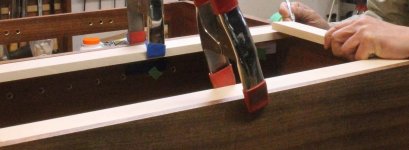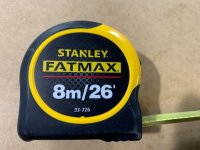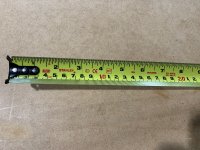Bugsysiegals
Member
- Joined
- Mar 19, 2016
- Messages
- 908
I switched from Imperial to Metric as I figured it would be easier to add/subtract solid numbers as well as remember them but so far I'm still making as many if not more mistakes. SMH
Since switching, I built a 8020 table saw outfeed table and ended up cutting 1 piece short by 10mm and another by 5mm. Yesterday I was breaking down sheets of Birch ply for cabinet drawer boxes and ended up cutting 4 pieces to short by 100mm. Then I was crosscutting all the sides, was in a rhythm, grabbed the stack of front/rear (32 of them), didn't look at my labels and cut them so they're all short! This was more of my own not paying attention, not having enough room to keep them separated well, pencil labels to small to stand out, etc., but nonetheless is a mistake.
All that said, it seems I can't get through a project without wasting material. Do you have these same issues or others you tend to make? If so, does it happen often, and have you found any methods to reduce the mistakes?
Possible solutions based on everybody's feedback:
Since switching, I built a 8020 table saw outfeed table and ended up cutting 1 piece short by 10mm and another by 5mm. Yesterday I was breaking down sheets of Birch ply for cabinet drawer boxes and ended up cutting 4 pieces to short by 100mm. Then I was crosscutting all the sides, was in a rhythm, grabbed the stack of front/rear (32 of them), didn't look at my labels and cut them so they're all short! This was more of my own not paying attention, not having enough room to keep them separated well, pencil labels to small to stand out, etc., but nonetheless is a mistake.
All that said, it seems I can't get through a project without wasting material. Do you have these same issues or others you tend to make? If so, does it happen often, and have you found any methods to reduce the mistakes?
Possible solutions based on everybody's feedback:
- Measure twice cut once
- Not all rules are created equal!! Check your rules against each other. You cannot mix/match rules which are not the same and expect the same results. Use rules which match for measuring, marking, fence/rail alignment, etc.
- If using metric, "cm" graduations rather than "mm" is known to cause more errors for some people. This is because it has 1-9 after each 10cm rather than 10,20,30, etc. or 10,11,12, etc. Errors have been reduced by people who have switched to mm scales.
- If you use "cm" graduations, learn to call out the measurement in meters (if applicable), followed by centimeters (if applicable), and finally millimeters. This will help you consistently find the correct spot on the rule.
- Double check with Imperial tape measure
- Label your stock ... besides name, size, etc., cut mark location helps to verify against the table saw rule, etc.
- Cut story poles and double check against the story pole
- Cut long pieces first
- Cut similar pieces all at the same time
- Don't do everything all at once ... you can fatigue ... slow down
- Shorten everything else!
- Get out the epoxy and wood filler




